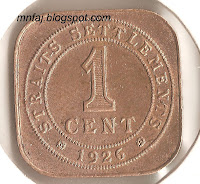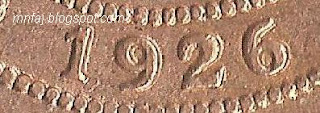Country of Origin: Malaysia
Denomination:100 Ringgit
Prefixes: A/1 869156
Dimension: 158mm x 95 mm
References: K.N Boon B5b
Category: Normal Circulation Note
Sign(s): Tun Ismail Md Ali as Gabenor of Bank Negara Malaysia
Issuance Period: 1967 - 1972
Issuance Period: 1967 - 1972
Printer: Thomas de la Rue & Co Ltd, London
Watermark(s): A head of tiger on the left of the note (obverse)
Vignette/Portrait: Tuanku Abdul Rahman, The First Yang Di-Pertuan Agong of Malaysia
Watermark(s): A head of tiger on the left of the note (obverse)
Vignette/Portrait: Tuanku Abdul Rahman, The First Yang Di-Pertuan Agong of Malaysia
My last catch for this year. I have been waiting for the right time and the right price to have any of 1st to 4th series of Seratus Ringgit Malaysia to be added to my collection. But I did not put high hope of possessing a Sa-Ratus piece, what more an A/1 prefix one! at least in foreseeable future. But I guess it's my luck then to have chance of keeping this first prefix of the first series Sa-Ratus Ringgit Malaysia at a very reasonable price.
Too sad the note has been washed and got major tear on it. After had successfully bringing her home, I must say that I am still eluded by the beauty of this note. The purplish tone on this note makes me thinking of my mother, which is very fond of that color. Does any of your banknote reminds you of someone? By the way Mom, don't mad at me, I'm buying this note because of you. Good excuse right? hehe























